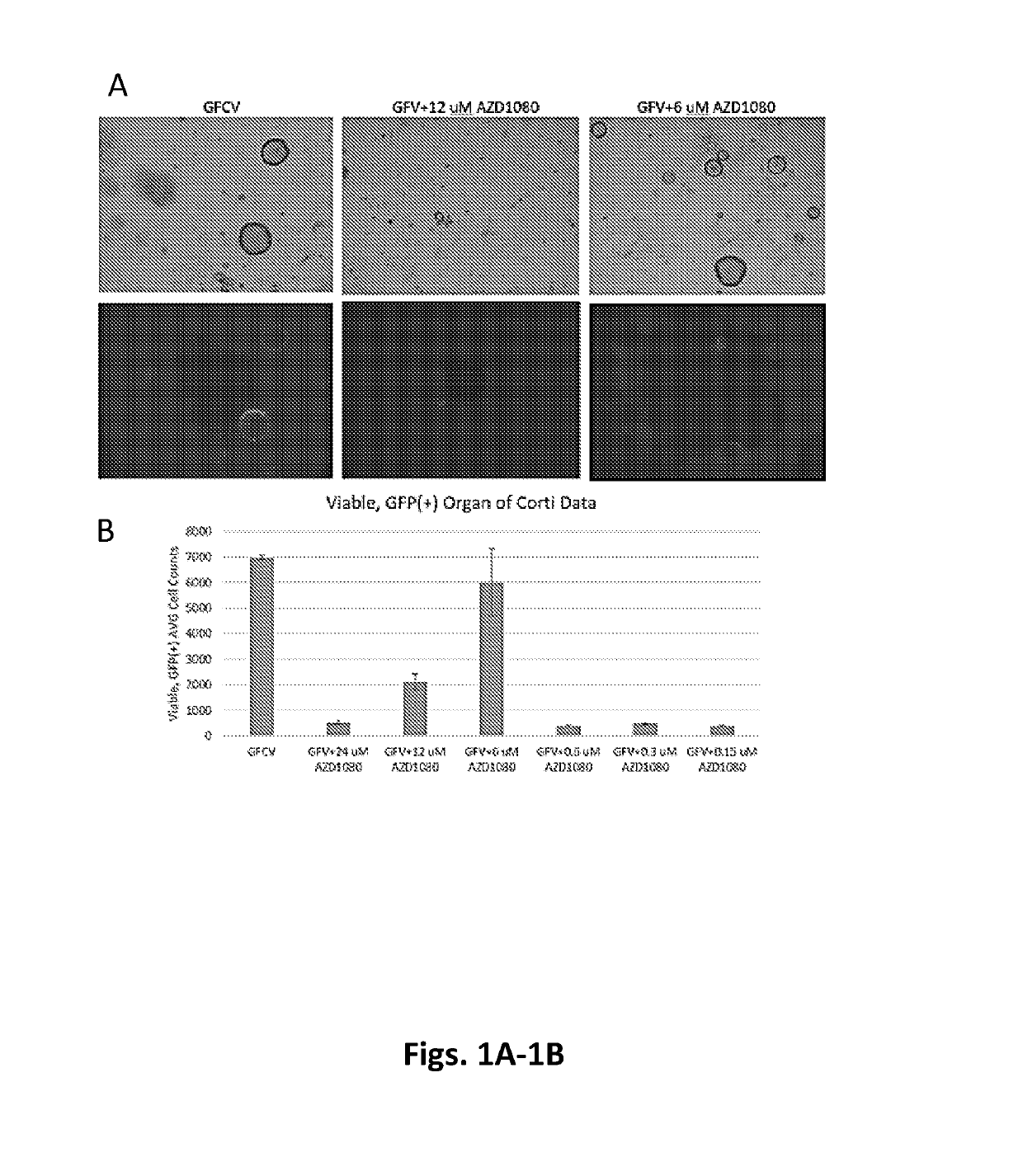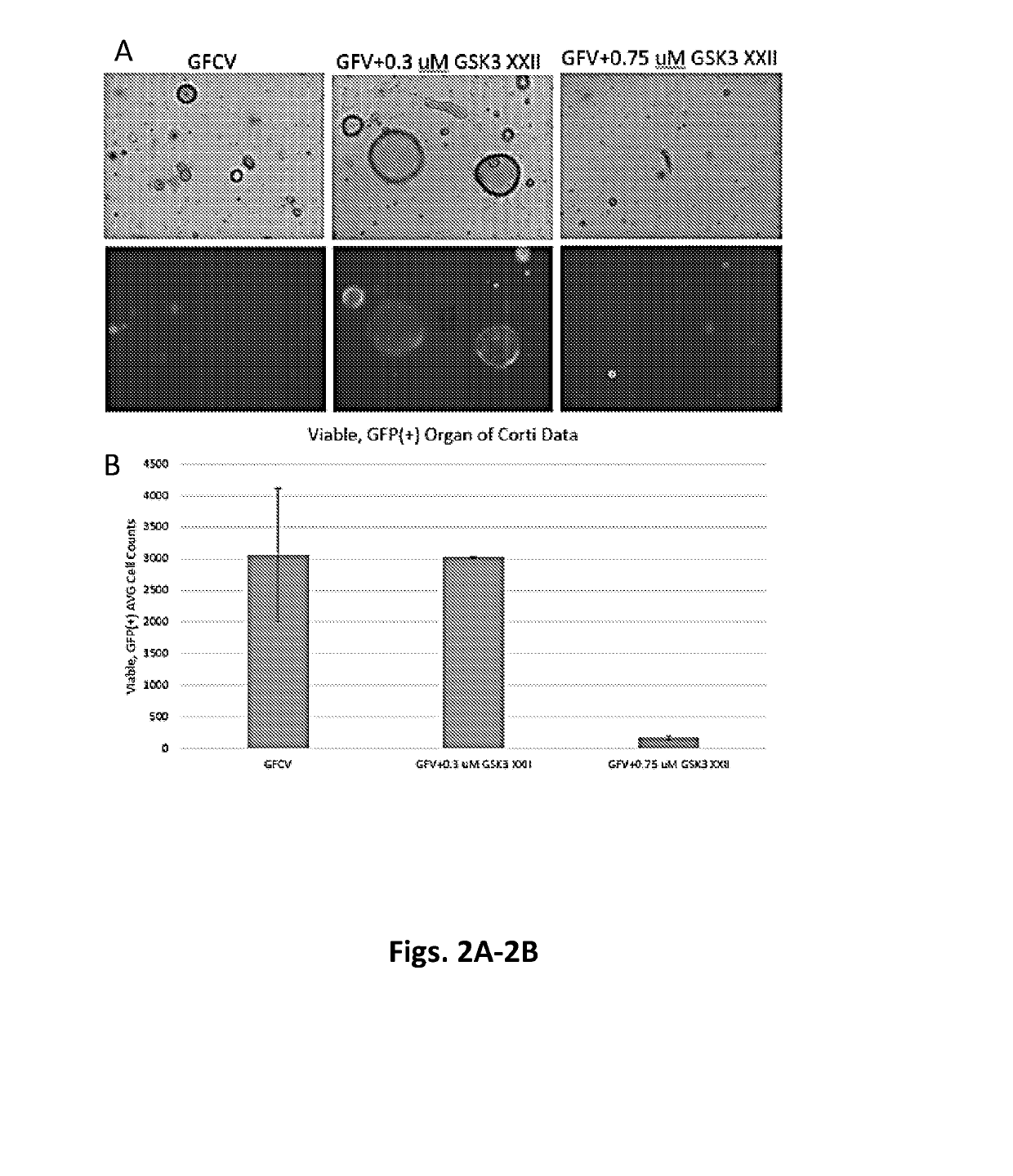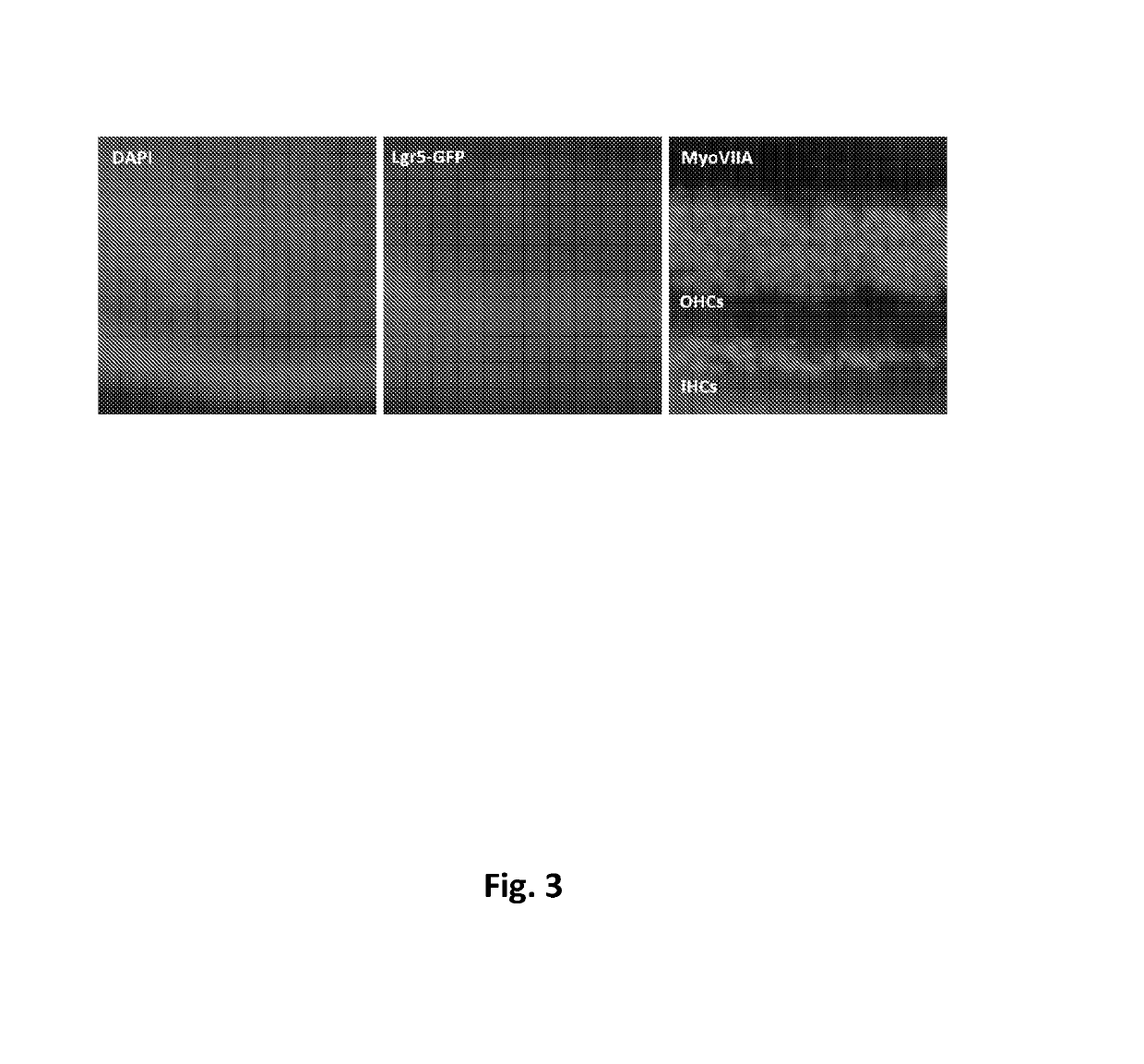Methods for controlled proliferation of stem cells / generating inner ear hair cells using gsk-3-alpha inhibitors
a technology of stem cells and inhibitors, applied in the field of controlled proliferation of stem cells/generating inner ear hair cells using gsk3alpha inhibitors, can solve the problems of potential exhaustion of the stem cell pool, lack of hair cell capacity of daughters, etc., and achieve the effect of improving the auditory functioning of subjects
- Summary
- Abstract
- Description
- Claims
- Application Information
AI Technical Summary
Benefits of technology
Problems solved by technology
Method used
Image
Examples
example 1
[0265]Cell culture: Heterozygous Lgr5-EGFP-IRES-CreERT2 (Lgr5-GFP) mice were obtained from Jackson Labs, and neonatal P2-P5 mice were used for cell isolation. Organ of Corti were isolated from Lgr5-GFP mice and further dissociated into single cells using Tryple (Life Technologies). Cells were then cultured as previously described (Yin et al, 2014). Briefly, cells were entrapped in Matrigel and plated at the center of wells in a 24-well plate. Following polymerization of Matrigel, 500 μl of culture media (Advanced DMEM / F12 with N2 and B27) was added, containing growth factors including EGF (50 ng / ml) (epidermal growth factor), bFGF (50 ng / ml) (fibroblast growth factor), and IGF1 (50 ng / ml) (insulin-like growth factor 1), Valproic acid sodium salt (1 mM), and the small molecules including CHIR99021 (3 μM), or AZD1080 (varying concentrations), or GSK3 inhibitor XXII (varying concentrations).
[0266]For single cell isolation, the cochleae were isolated from the otic capsule and the modiol...
PUM
| Property | Measurement | Unit |
|---|---|---|
| diameter | aaaaa | aaaaa |
| field size | aaaaa | aaaaa |
| field size | aaaaa | aaaaa |
Abstract
Description
Claims
Application Information
 Login to View More
Login to View More - R&D
- Intellectual Property
- Life Sciences
- Materials
- Tech Scout
- Unparalleled Data Quality
- Higher Quality Content
- 60% Fewer Hallucinations
Browse by: Latest US Patents, China's latest patents, Technical Efficacy Thesaurus, Application Domain, Technology Topic, Popular Technical Reports.
© 2025 PatSnap. All rights reserved.Legal|Privacy policy|Modern Slavery Act Transparency Statement|Sitemap|About US| Contact US: help@patsnap.com



